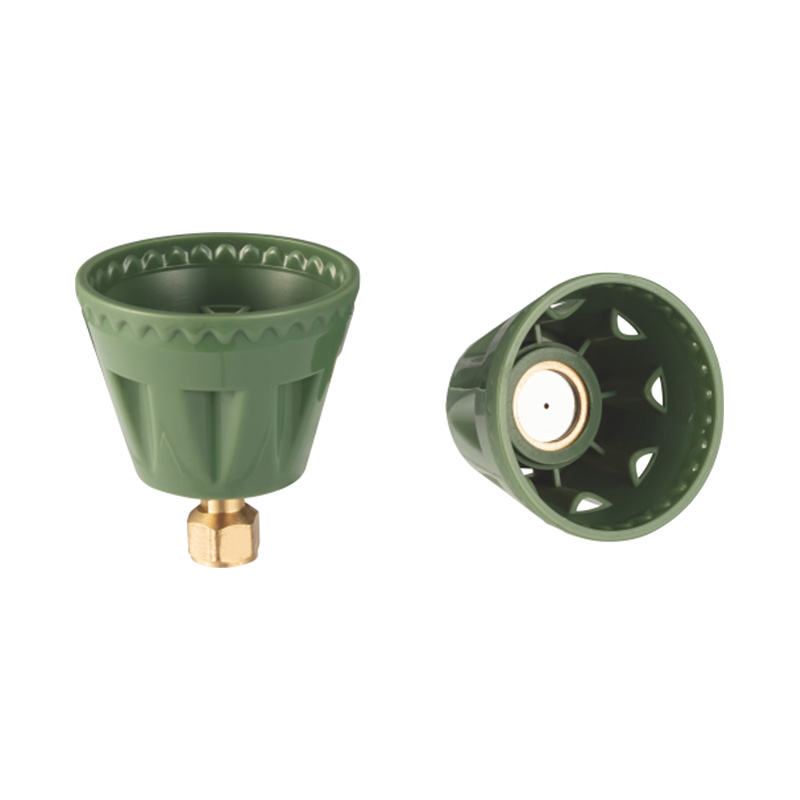As a professional manufacturer, Hangyuan always ha...
See DetailsFarmers often face the question of when to modify the settings of an Agricultural Pressure Adjustable Nozzle or a Pesticide Spray Gun Nozzle to achieve effective spraying results. Since crops grow under changing environmental conditions and require different treatments during their growth cycle, the timing of nozzle adjustments can directly influence spraying accuracy, chemical utilization, and crop health.
Different growth stages require different levels of spray coverage. Seedlings with delicate leaves may benefit from a fine mist, ensuring the solution does not damage tender tissues while still providing necessary protection. As crops mature and leaf density increases, a wider spray angle or higher pressure setting may be required to reach deeper layers of the canopy. Adjusting nozzle settings according to these stages ensures that pesticides, herbicides, or nutrients are delivered effectively.

Weather conditions significantly affect spraying outcomes. On windy days, finer droplets are more likely to drift away from the target, making it practical to adjust the nozzle to produce larger droplets with a lower spray angle. During dry conditions, operators may opt for a finer mist to help maintain leaf surface moisture. In humid climates, larger droplets may be preferred to reduce prolonged leaf wetness, which can encourage fungal diseases. Making these adjustments according to the weather helps maintain both spraying efficiency and crop safety.
Nozzle settings must often be modified to suit crop characteristics. For row crops like wheat or corn, narrow-angle spraying with consistent droplet size ensures even coverage across dense planting. In orchards or vineyards, adjusting to a higher pressure and a more flexible spray pattern helps the solution penetrate thick canopies. Vegetables and greenhouse crops, on the other hand, may require gentle mist spraying to avoid damaging sensitive leaves. Aligning nozzle adjustments with crop types improves treatment effectiveness while avoiding overuse of chemicals.
The severity of pest infestations or disease outbreaks also guides nozzle settings. For surface pests, wide-angle spray coverage may be enough to protect leaves. When dealing with pests that hide on the undersides of leaves or within dense foliage, higher pressure and finer atomization are often necessary. Timely nozzle adjustments based on pest and disease presence ensure that control measures reach their intended target areas.
Not all spraying liquids behave the same way. Pesticides, herbicides, and nutrient solutions vary in viscosity and concentration. Thicker solutions may require higher pressure settings or wider nozzles to ensure consistent flow.Adjusting nozzle settings to match liquid properties helps improve absorption and prevents uneven application.
Frequent but thoughtful adjustments help operators avoid unnecessary waste of chemicals and water. This careful management ensures that each droplet contributes effectively to crop protection or growth enhancement.
Operators benefit from practical nozzle adjustments as well. A properly calibrated nozzle reduces the likelihood of chemical drift, lowering worker exposure during spraying. Ergonomic design in triggers and handles makes it easier to change settings quickly in the field, allowing workers to adapt to shifting conditions without interrupting operations. This improves daily workflow while maintaining accurate spraying results.
Adjusting nozzle settings at the right time is not a one-time task but an ongoing process throughout the farming season. By aligning spray techniques with crop stages, environmental shifts, and input requirements, farmers can maintain consistent spraying performance. This consistency supports stable crop growth, better resource management, and dependable results across varied conditions.